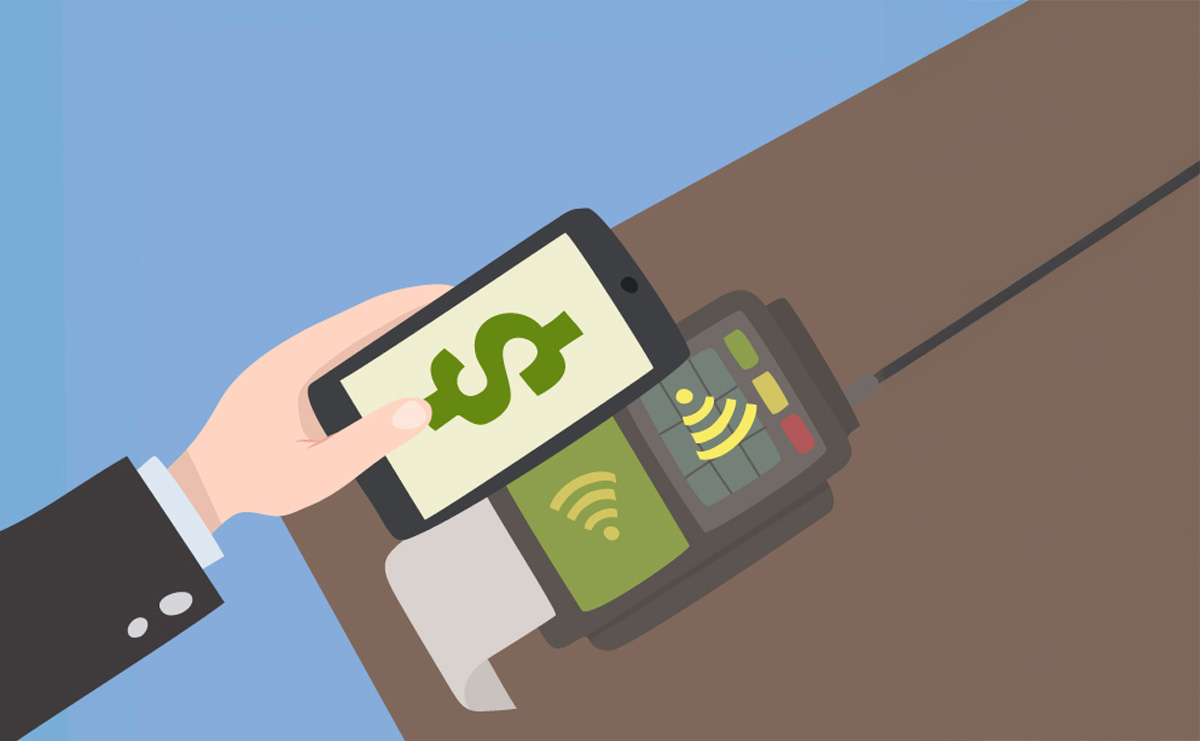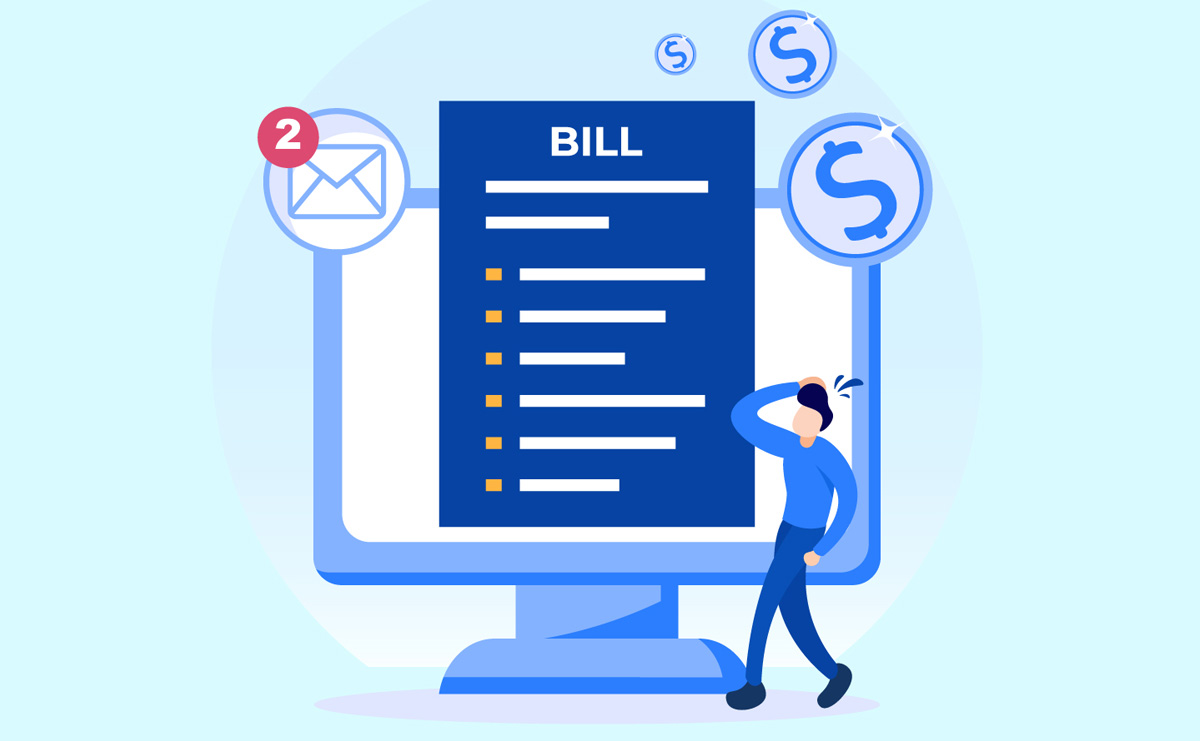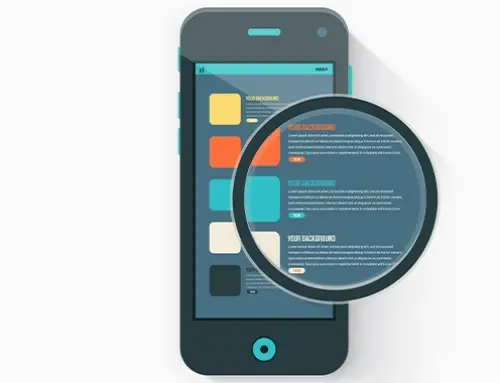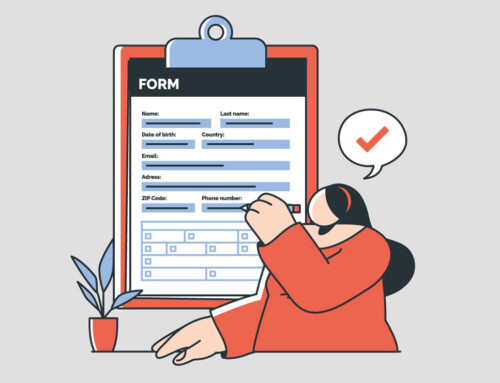Contents
The Ultimate Guide to Payment Chargebacks: Everything You Need to Know
A merchant may face chargeback when they have their transaction reversed, from their account to the customer’s. In other words, in some situations, customers are not satisfied with the product they bought. Thus, they want to give back the goods and take their money back.
Why Do Chargebacks Happen?
Chargebacks are an essential safeguard in the payment ecosystem, designed to protect customers against errors, dissatisfaction, or fraud. However, for businesses, including law firms, this can be disruptive and costly. To effectively manage disputes, it is crucial to understand the concept of this issue meaning and the various reasons they occur.
This typically arises from one of three primary causes: misunderstandings, errors, or fraud. Misunderstandings often involve customers who need to recognize charges on their bank statements. For example, if a law firm bills a client under a business name that differs from its publicly known name, the client may suspect unauthorized activity and dispute the transaction. Clear and consistent billing descriptors are vital to avoiding such disputes.
Billing errors are another common cause. Duplicate charges, incorrect amounts, or failure to provide receipts can lead clients to question the legitimacy of transactions. These preventable issues emphasize the importance of meticulous record-keeping and robust accounting systems.
Fraudulent transactions represent the most severe cause. These can occur when stolen credit card information is used to make unauthorized payments. According to Chargebacks911, fraudulent activity accounts for many disputes, especially in industries that rely heavily on online transactions.
-
Examples of Check Scenarios
To understand what a chargeback is, consider real-world examples that law firms and businesses often encounter. A law firm may charge a retainer fee, which appears on the client’s bank statement as “Legal Services LLC.” Clients may file a case if they do not recognize this descriptor. In another instance, a client’s credit card could be stolen, and the thief could use it to pay for services. The client, noticing unauthorized charges, would initiate a dispute. Similarly, a lack of communication about service delays could prompt dissatisfied clients to seek reimbursement through their bank.
-
Fraudulent vs. Legitimate Chargebacks
Chargebacks can generally be divided into two categories: legitimate and fraudulent. Legitimate chargebacks arise when a client has a valid reason for disputing a charge, such as undelivered services or billing errors. In contrast, fraudulent chargebacks occur when clients abuse the system to secure refunds for services they actually received. This form of abuse, also known as chargeback fraud, is particularly challenging for businesses to combat.
The Federal Trade Commission (FTC) reports that many small businesses face disputes related to unauthorized charges, making fraud prevention strategies essential. The FTC’s Guide on Fraud Prevention provides more about fraud prevention and handling unauthorized transactions.

-
Why Understanding the Concept Matters
Knowing why this issue happens enables businesses to take preventive action. By fostering clear communication with clients, companies can minimize misunderstandings and disputes. Secure payment processing systems can help identify and prevent fraudulent transactions before they escalate into serious situations. Furthermore, educating clients about the billing process, including explicit invoice descriptors, can reduce unnecessary disputes.
How the Process Works
Understanding what a chargeback is, is essential for businesses to protect revenue and maintain smooth operations. Whether managing payment disputes for the first time or refining your current practices, knowing what a chargeback is and how the process unfolds will prepare you to handle these situations effectively.
I. The Role of Banks
The process begins when a client disputes a transaction with their bank. Upon receiving the dispute, the bank temporarily credits the customer’s account and debits the merchant’s account for the same amount. The bank then notifies the merchant, providing an opportunity to respond.
Banks act as intermediaries in such cases, assessing the evidence provided by both the merchant and the client. This role is pivotal in determining whether the claim is valid, or the funds should be returned to the merchant.
Merchants must understand this dynamic to prepare adequate documentation, as banks rely heavily on clear and compelling evidence when resolving disputes.
II. Steps Involved in a Dispute
To grasp the meaning in practice, businesses must familiarize themselves with the steps involved in the process. These steps typically include:
- Client Initiates a Dispute: A client files a chargeback with their bank, citing reasons such as unauthorized charges, billing errors, or service dissatisfaction.
- Funds Are Reversed: The disputed amount is temporarily credited back to the client, and the merchant is debited an equivalent amount, often along with a chargeback fee.
- Merchant Responds: The merchant is notified and allowed to dispute by providing relevant evidence, such as receipts, service agreements, or email correspondence.
- Bank Reviews Evidence: The bank evaluates the documents submitted by both parties to determine their validity.
- Final Decision: Based on the evidence, the bank either upholds the claim of the customer or rules in favor of the merchant, reversing the funds back to their account.
This structured approach ensures that clients and merchants can present their cases, promoting fairness in resolving disputes.
III. Key Players in the Process
The process involves several key participants, each playing a critical role in determining the outcome:
- Cardholder (Client): The individual or entity that initiates the process by disputing a transaction.
- Issuer (Bank): The bank or financial institution representing the cardholder, which processes and communicates with the merchant’s bank.
- Acquirer (Merchant’s Bank): The bank that holds the merchant’s account and facilitates their ability to dispute.
- Merchant (Business): The business or law firm that must respond and provide evidence to contest it.
By understanding these roles, businesses can streamline the management processes and ensure that they comply with all procedural requirements.
Effective management requires a deep understanding of their workflow and the evidence needed to contest them. Businesses that proactively prepare for disputes by maintaining detailed records and using robust payment systems can significantly reduce their risk of financial loss.
Chargebacks in Different Payment Methods
The methods of payment a business accepts can significantly influence how this occurs and how they should be managed. Whether dealing with credit cards, debit cards, or online payments, understanding the nuances of each payment type helps businesses mitigate disputes and manage them effectively. By exploring the meaning in these contexts, companies can better prepare for potential conflicts and align their processes accordingly.
I. Credit Card Explained
Credit cards are one of the most common payment methods. Clients often use chargebacks to dispute unauthorized transactions, billing errors, or dissatisfaction with services. This process involves the client initiating a claim through their credit card issuer, who then reviews the case and determines its validity. Understanding this in the context of credit cards is vital for businesses. This often comes with strict response timelines and requires detailed documentation to contest successfully.
II. Debit Card: Differences and Challenges
Debit cards, while similar in concept to credit card disputes, involve different rules and timelines. Because debit card transactions are directly tied to a client’s bank account, disputes often require faster responses and carry higher stakes for the client. The lack of extended consumer protection laws for debit cards compared to credit cards means businesses must handle these disputes carefully.
III. Online Payments: A Growing Concern
With the rise of digital transactions, online payments have become a significant source. Fraudulent activities such as unauthorized card use are more prevalent online, making these payments particularly susceptible. Additionally, clients may file disputes simply because they need to recognize charges associated with their online purchases.
For online payments, the meaning extends to the need for enhanced security measures. Features like RunSensible’s secure payment integrations and client communication tools enable businesses to reduce the risk of disputes by fostering transparency and maintaining clear records. These tools also help in addressing client concerns before they escalate.
The Impact of The Issue on Businesses
Chargebacks represent more than just a financial inconvenience for businesses; they have far-reaching consequences that affect operations, reputation, and profitability. By understanding what a chargeback is and its broader implications, companies can better prepare to mitigate these challenges.
I. Financial Losses
One of the most immediate impacts is the financial loss incurred by the business. Beyond the reversal of funds, companies often must pay fees, which can add up over time. Repeated actions may also lead to increased payment processing fees or the termination of merchant accounts. The chargeback meaning here is clear: it signifies the loss of revenue, and the additional costs associated with managing disputes.
II. Reputation Risks and Customer Trust
Chargebacks can damage a business’s reputation, especially when clients perceive the need to dispute charges as a reflection of poor service or unclear billing practices. A high rate may suggest to clients and payment processors that the business could be more reliable and organized.
III. Operational Disruptions
Managing it requires significant time and resources. Collecting evidence, responding to disputes, and navigating the complexities of the chargeback meaning can distract from core business activities. When time management is critical for law firms, these disruptions can hinder productivity.
IV. Long-Term Consequences
Beyond immediate financial and operational impacts, a high rate can affect a business’s ability to maintain favorable relationships with payment processors. Excessive chargebacks may lead to penalties or even restrictions on processing certain types of payments, further limiting a business’s revenue potential.
Strategies to Prevent
Preventing chargebacks requires businesses to adopt proactive strategies that address the root causes of disputes. By understanding chargeback meaning and the processes that lead to them, businesses can implement measures to reduce their occurrence, maintain client trust, and protect their financial stability.
I. Improving Communication with Clients
Clear communication is one of the most effective ways to prevent the issue. Many disputes arise due to misunderstandings about billing, services, or charges. Ensuring clients are informed and comfortable with your processes minimizes the likelihood of conflicts escalating.
RunSensible provides comprehensive client relationship management tools that streamline communication. Automated reminders, clear invoicing, and easy access to client information help businesses establish trust and transparency, which are essential in preventing disputes.
II. Establishing Transparent Billing Policies
A significant portion results from unclear or misleading billing practices. Clients are more likely to question charges When they are unaware of fees, retainer agreements, or payment schedules. To avoid this, businesses should implement transparent and detailed billing policies.
Using RunSensible invoicing features, law firms, and other businesses can create clear, detailed invoices outlining every charge. The system also allows businesses to customize billing descriptors to ensure clients can easily recognize transactions on their statements, practically addressing an essential aspect of chargeback meaning.
III. Utilizing Technology to Enhance Security
Fraudulent transactions are a leading cause of chargeback meaning, particularly for online payment businesses. Implementing robust security measures, such as secure payment gateways and fraud detection tools, helps prevent unauthorized transactions that could lead to disputes.
RunSensible integrates secure payment systems that protect both businesses and clients. By automating transaction monitoring and flagging suspicious activity, RunSensible reduces the risk of fraud and helps companies maintain compliance with industry standards.
IV. Addressing Client Concerns Promptly
One of the simplest ways to prevent disputes is to resolve client issues before they escalate. Many clients file disputes out of frustration or a need for more response from the business. By addressing concerns quickly and effectively, companies can avoid unnecessary conflicts.
RunSensible task management and client communication tools allow businesses to respond to client inquiries promptly. Automated workflows ensure no issue is overlooked, fostering stronger client relationships and reducing the likelihood.
V. Keeping Comprehensive Records
Maintaining accurate and comprehensive records of transactions, contracts, and client communications is critical in preventing and contesting chargeback meaning. When a client disputes a charge, detailed documentation can help resolve the issue in the business’s favor.
RunSensible centralized data management system simplifies record-keeping, making it easy to access and organize the documentation needed to contest chargeback meaning. This helps businesses handle disputes efficiently and reinforces best practices for operational management.
How to Handle Disputes Effectively
Chargeback meaning can be complex and time-consuming, but businesses that approach them strategically can protect their revenue and reputation. Understanding what a chargeback is and its dispute process is essential for crafting a clear and compelling response that aligns with industry standards and regulations.
I. Gathering Evidence to Challenge
When a process is initiated, the business is responsible for providing evidence to dispute the claim. This evidence may include receipts, invoices, communication records, and signed contracts. A well-documented response significantly increases the chances of overturning.
II. Steps to Submit a Dispute Response
To handle it effectively, businesses must follow a structured process:
- Review the Details: Understand the reason for the dispute, as provided by the client’s bank, and identify the specific transaction.
- Prepare Supporting Documentation: Gather all evidence related to the transaction, including signed agreements, email correspondence, and proof of service delivery.
- Respond Within the Deadline: Submit the required documentation to the bank or payment processor within the specified timeframe. Delays can result in the dispute being automatically lost.
- Monitor the Dispute’s Progress: Communicate openly with the payment processor or bank to stay informed about the case status.
III. When to Accept or Contest
Not all should be contested. Businesses should evaluate each case individually, considering the cost of dispute against the potential recovery of funds. For example, accepting the chargeback meaning may be more practical if the disputed amount is low or the evidence is insufficient.
IV. Long-Term Management
Beyond individual disputes, businesses must adopt long-term strategies to minimize the impacts. This includes analyzing dispute patterns, identifying recurring issues, and implementing preventive measures. Effectively handling disputes requires preparation, documentation, and strategic decision-making.
By leveraging these features, companies can turn challenges into opportunities for growth and improvement.
Tools and Resources to Manage
Effectively managing requires the right tools and resources to streamline the process and reduce the burden on businesses. With the support of technology like RunSensible, companies can stay ahead of disputes, enhance operational efficiency, and protect their bottom line. Leveraging robust tools is crucial to fully understanding and effectively handling it.
I. How RunSensible Can Help with Management
RunSensible provides a comprehensive platform that simplifies the complexities of management. Integrating billing, communication, and document management into one seamless system equips businesses with everything they need to address disputes effectively.
One of the most critical aspects of handling it is presenting strong evidence promptly. With RunSensible’s automated record-keeping and centralized data storage, businesses can quickly access invoices, signed agreements, and correspondence, ensuring a well-prepared response.
Additionally, the system offers secure payment processing tools, reducing the likelihood of errors or fraudulent transactions that often lead to disputes. This proactive approach helps businesses avoid unnecessary chargebacks while maintaining client satisfaction.
II. Top Features for Preventing Payment Disputes
Understanding the chargeback meaning goes beyond handling disputes; it includes implementing features that help prevent disputes from occurring in the first place. RunSensible offers several tools designed to mitigate common causes:
- Transparent Billing: Clear and customizable invoicing ensures clients recognize charges on their statements, reducing confusion that leads to disputes.
- Automated Communication: Email reminders and notifications inform clients about payments, deadlines, and terms, minimizing misunderstandings.
- Secure Payment Gateways: Advanced payment integration ensures transactions are safe and verified, reducing the risk of fraudulent activities.
- Detailed Reporting: Analytics and reporting tools help identify dispute trends, enabling businesses to address recurring issues proactively.
These features make RunSensible an invaluable tool for preventing and managing while building stronger client relationships.
III. Integrating Solutions into Your Workflow
Efficiently managing requires seamless integration with existing workflows. RunSensible excels in this area by offering tools that adapt to the specific needs of your business. This means integrating case management, client communication, and financial tracking into one cohesive system for law firms.
For example, when a chargeback is initiated, RunSensible’s task management tools automatically create reminders and assign responsibilities, ensuring timely responses. The platform’s workflow automation reduces manual effort, allowing businesses to focus on core activities while maintaining compliance with dispute processes.
IV. Long-Term Benefits of Using RunSensible
A powerful tool like RunSensible streamlines the process and delivers long-term benefits. By reducing the frequency, businesses can maintain lower processing fees and protect their relationships with payment processors. In addition, the insights gained from RunSensible’s analytics can help companies refine their operations, reducing disputes over time.
With RunSensible, businesses gain more than a tool—they gain a strategic partner in managing. From understanding what a chargeback is to implementing proactive solutions, RunSensible supports every stage of the process, enabling businesses to operate with confidence and efficiency.
Mastering Chargebacks for Business Success
Chargebacks are an unavoidable part of running a modern business but understanding them and their implications allows businesses to turn challenges into opportunities. By grasping the meaning of chargeback in the context of disputes, operational risks, and financial impact, businesses can develop proactive strategies to reduce disputes and protect their revenue. From transparent communication to robust record-keeping, every step toward managing this issue strengthens client relationships and fosters trust.
Leveraging the right tools, like those offered by RunSensible, enables businesses to handle it efficiently and effectively. With features designed to streamline processes, secure payments, and enhance client transparency, businesses are equipped to minimize disputes and focus on delivering exceptional service. By integrating management into daily workflows, companies can reduce the burden of conflicts, ensuring long-term operational stability and success.
FAQs
1. What is a chargeback, and how does it work?
A chargeback is a payment reversal initiated by the cardholder’s bank after the cardholder disputes a transaction. The process involves the bank temporarily refunding the cardholder and debiting the merchant’s account while investigating the claim. If the chargeback is valid, the funds are permanently reversed; otherwise, they are returned to the merchant.
2. What is the difference between a chargeback and a refund?
A refund is a voluntary action by a merchant to return a customer’s money, typically to resolve an issue directly. In contrast, a chargeback is initiated by the customer through their bank, often without prior communication with the merchant. Chargebacks may also involve additional fees for the merchant.
3. How long does a customer have to file a chargeback?
The time frame to file a chargeback depends on the card network, but it generally ranges from 60 to 120 days from the transaction date. Specific disputes, such as those involving fraud, may have extended filing periods depending on the circumstances and policies of the issuing bank.
4. Can businesses fight fraudulent chargebacks?
Yes, businesses can challenge fraudulent chargebacks by submitting evidence to the bank during the dispute process. Documentation such as receipts, contracts, delivery confirmations, and communication records can help the bank determine the validity of the chargeback and potentially return the funds to the business.
Disclaimer: The content provided on this blog is for informational purposes only and does not constitute legal, financial, or professional advice.







